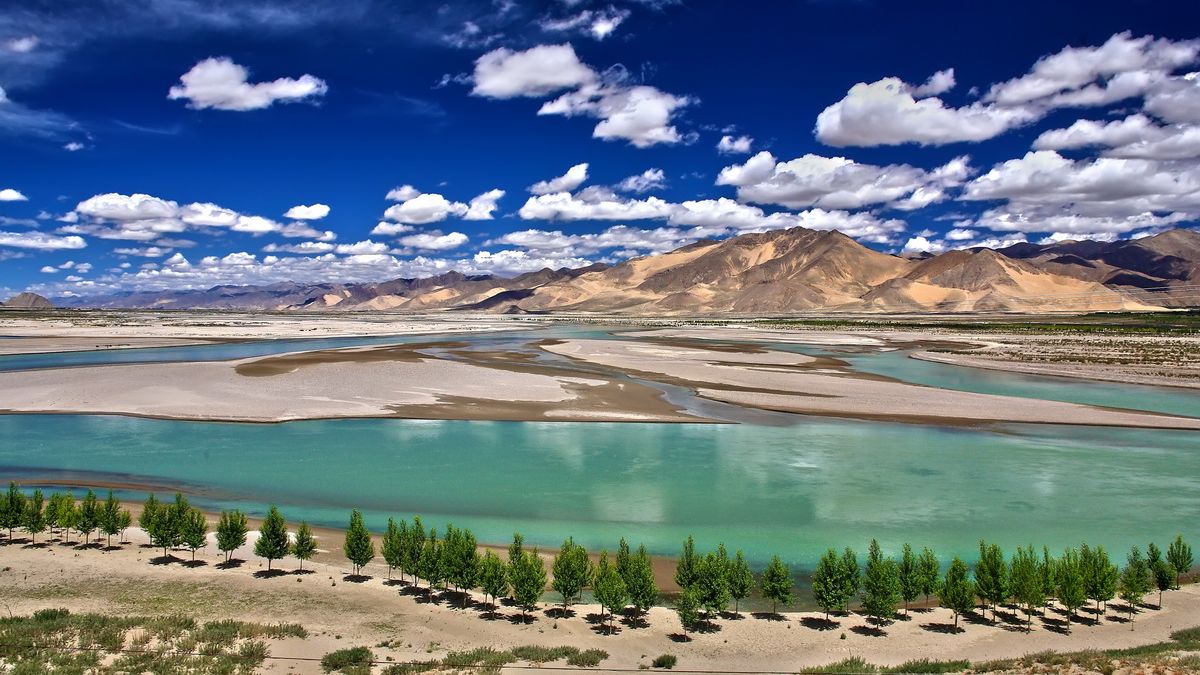China Starts Building World’s Largest Dam On Brahmaputra In Tibet, Assam CM Not Worried

China has begun construction of the wrld's largest dam on the Yarlung Tsangpo— the Brahmaputra river's name in Tibet. Image courtesy: Wikimedia Commons
China has begun construction of what is to become the world’s largest hydroelectric dam on the Yarlung Zangbo river, the upper stream of the Brahmaputra, near the Indian border. Estimated to cost at least $170 billion, the massive project aims to generate 300 billion kilowatt-hours of electricity annually, equivalent to the United Kingdom’s annual consumption. The dam is slated for completion in the 2030s.
While China argues the dam will power Tibet and support national energy goals without harming downstream flows, India and Bangladesh remain sceptical. Their concerns stem less from fears of water scarcity and more from the prospect of sudden flooding, ecosystem damage, and loss of livelihood in their densely populated floodplains.
Why is India concerned about the Chinese dam in Tibet?
India has concerns that the dam’s size and location give China the leverage to use as a “water bomb” in any future confrontation. Politicians and security analysts warn that Beijing could use the dam to release water at once during times of military tension, triggering floods across Arunachal Pradesh and Assam.
Arunachal Pradesh Deputy Chief Minister Chowna Mein echoed those concerns in March, warning that even partial diversion of the Yarlung Zangbo could cause the Siang river in Arunachal Pradesh and its tributaries to dry up. This would affect the aquatic ecosystem as well as millions dependent on the Brahmaputra downstream for agriculture and daily survival.
Despite reassurances from China that the dam would not significantly alter flows, India remains unconvinced. Its apprehension is fuelled by Beijing’s longstanding reluctance to enter binding river-sharing agreements. Although a 2013 memorandum of understanding (MoU) exists between the two countries for hydrological data sharing, Indian officials have stated that cooperation has been inconsistent.
Does the dam threaten Brahmaputra’s flow into India?
Geographically, China may hold the river’s origin, but it does not control its bulk. The Yarlung Zangbo contributes only about 14% to the Brahmaputra’s annual flow. Once it descends into Arunachal Pradesh and merges with tributaries like the Lohit and Dibang, the river gains most of its volume (over 86%) from Indian territory driven by monsoon-fed torrents.
Experts suggest the fear of China cutting off flow entirely is overstated. However, the larger threat lies in abrupt water surges from the dam, whether deliberate or accidental. In a region already vulnerable to monsoon floods and fragile infrastructure, such releases could overwhelm the floodplains of Assam and Arunachal, worsening climate-induced vulnerabilities.
Assam Chief Minister Himanta Biswa Sarma downplayed immediate fears on Monday, noting that different theories exist and that India’s central government is likely monitoring the situation. He pointed out that lower flow could paradoxically reduce floods, but admitted the lack of clarity makes definitive assessments difficult.
What is India’s response to the megadam?
India is advancing its own hydropower project, the Upper Siang Multipurpose Project in Arunachal Pradesh, intended partly as a strategic counterweight. The goal is to enhance water security, power generation, and flood control in the face of China’s growing upstream infrastructure.
There is also growing consensus in India’s policy circles on the need to establish formal water-sharing mechanisms with China. Without such frameworks, downstream nations like India and Bangladesh are left vulnerable to the decisions of an upstream power operating unilaterally.







